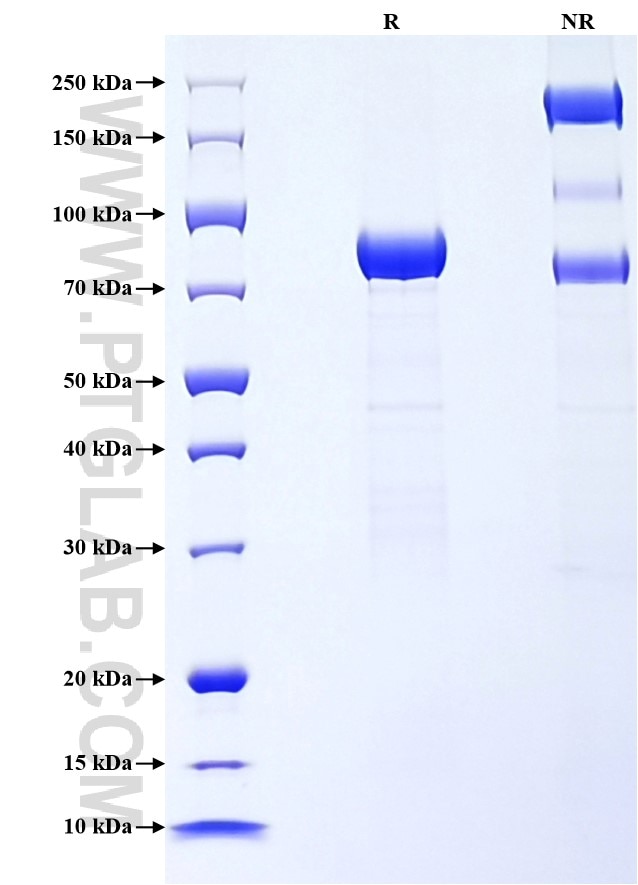Recombinant Human OMD protein (rFc Tag)
Species
Human
Purity
>90 %, SDS-PAGE
Tag
rFc Tag
Activity
not tested
Cat no : Eg2816
Validation Data Gallery
Product Information
| Purity | >90 %, SDS-PAGE |
| Endotoxin | <0.1 EU/μg protein, LAL method |
| Activity |
Not tested |
| Expression | HEK293-derived Human OMD protein Gln21-Glu421 (Accession# Q99983) with a rabbit IgG Fc tag at the C-terminus. |
| GeneID | 4958 |
| Accession | Q99983 |
| PredictedSize | 73.2 kDa |
| SDS-PAGE | 75-90 kDa, reducing (R) conditions |
| Formulation | Lyophilized from 0.22 μm filtered solution in PBS, pH 7.4. Normally 5% trehalose and 5% mannitol are added as protectants before lyophilization. |
| Reconstitution | Briefly centrifuge the tube before opening. Reconstitute at 0.1-0.5 mg/mL in sterile water. |
| Storage Conditions |
It is recommended that the protein be aliquoted for optimal storage. Avoid repeated freeze-thaw cycles.
|
| Shipping | The product is shipped at ambient temperature. Upon receipt, store it immediately at the recommended temperature. |
Background
Osteomodulin (OMD) is a keratan sulfate proteoglycan and a member of the SLRP family. OMD was originally isolated and characterized from bone and shown to be strongly expressed by osteoblasts. Although OMD is considered to be mainly expressed in bone, its expression has been observed in other cell types, such as articular chondrocytes and fibrochondrocytes.
References:
1. Wendel M, et al. (1998). Cell Biol. 141:839–847. 2. Sommarin Y, et al. (1998). J. Biol. Chem. 273:16723–16729. 3. Juchtmans N, et al. (2015). Arthritis Rheumatol. 67:435–441.
